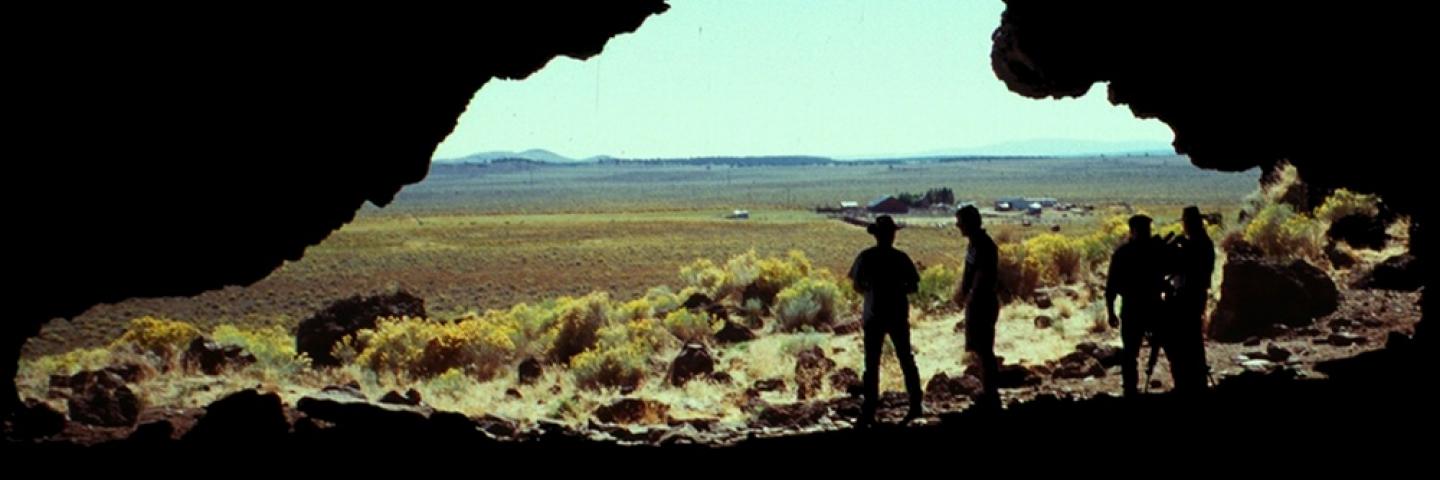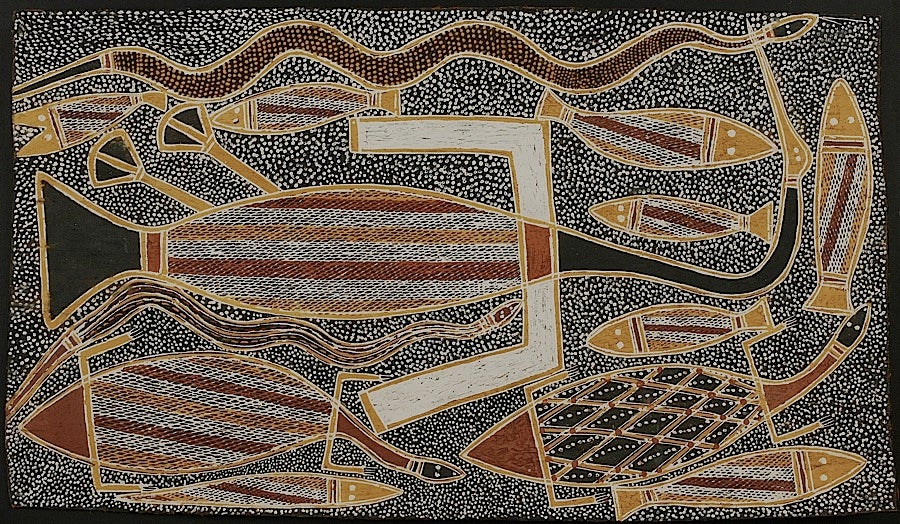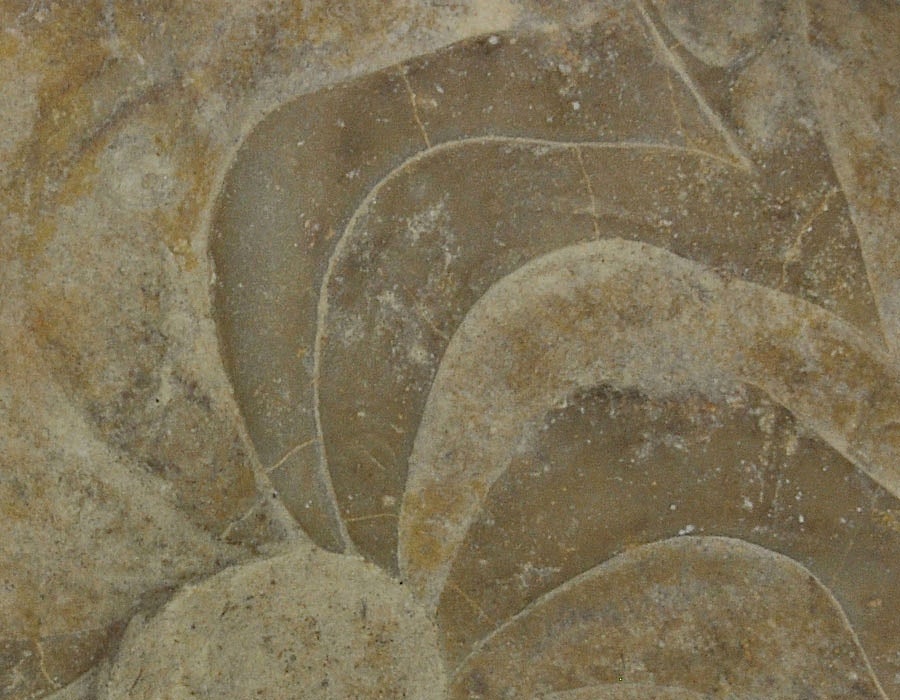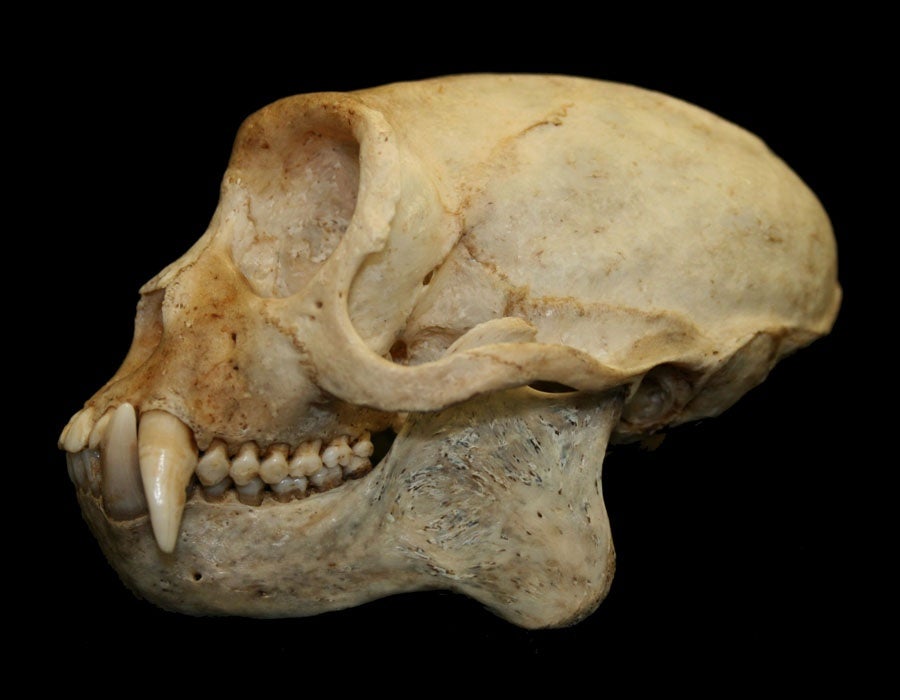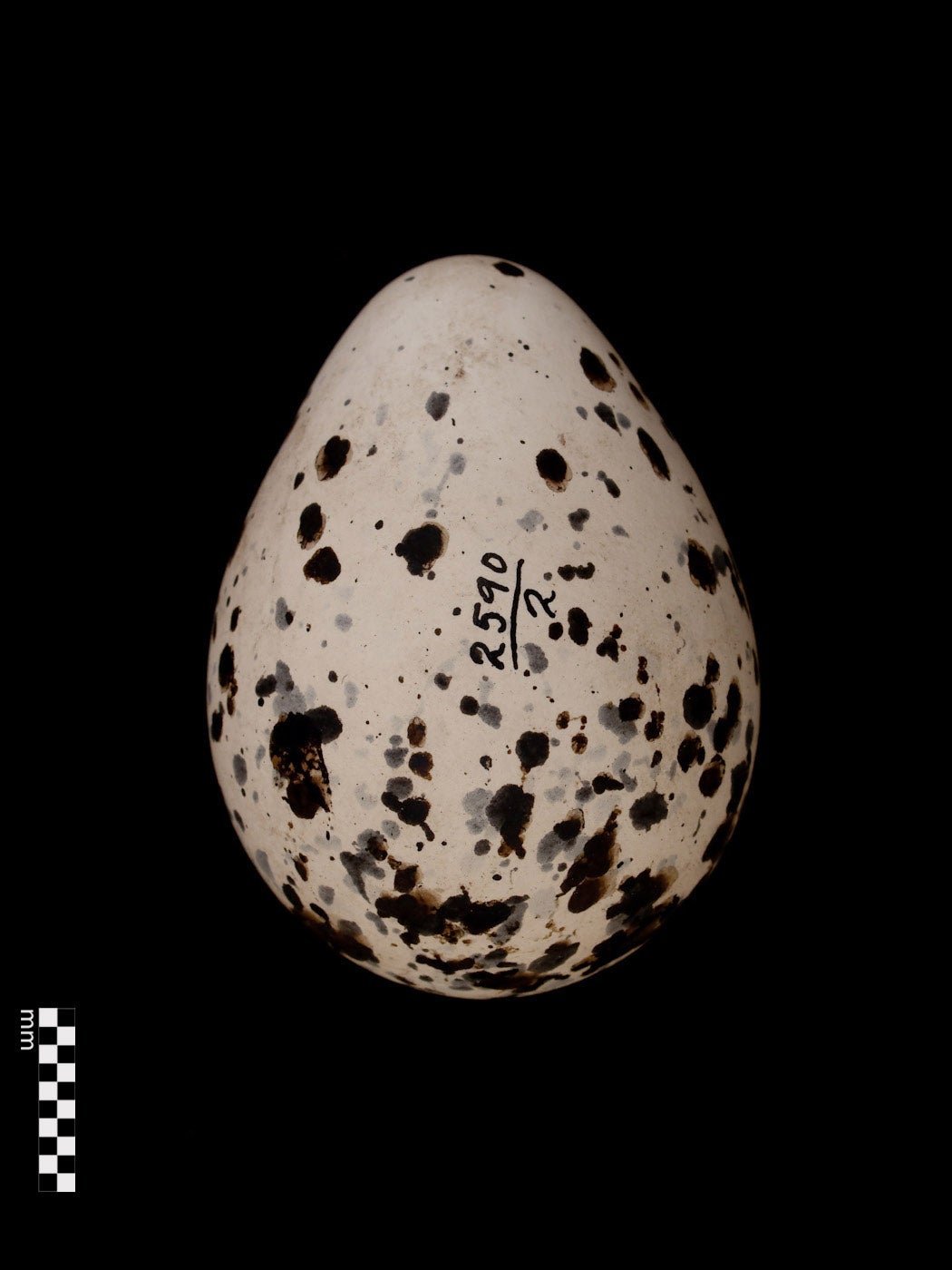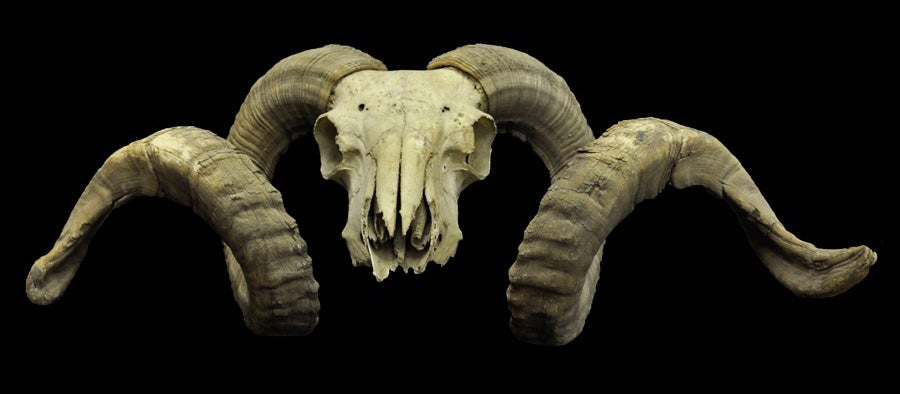Nearly 100 sandals were found below Mazama Ash in Fort Rock Cave, including large ones for men and women, and smaller sandals worn by children. Some have heavily worn soles or are caked with mud. The toe-flaps of one pair are marked with numerous tiny spots charred by sparks from a fire.
Learn more about the types of sandals found in the Great Basin:
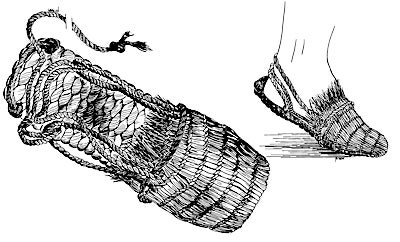
| Fort Rock sandals are woven with a technique called twining. The flat sole is made with five thick warps oriented with the long axis of the foot, over which weft cords are twined back and forth, progressing from heel to toe. The warps are then split into finer cords, folded back over the top of the foot, and woven into a finer toe-flap to cover the front of the foot. A cord pulled through loops attached to the rear of the sole is cinched around the ankle to secure the sandal. |
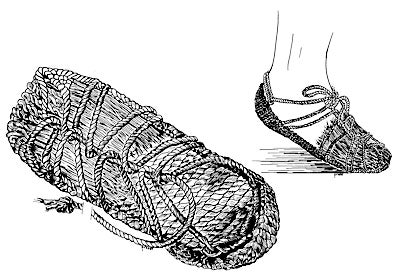 | Multiple Warp sandals, dated from over 9000 to <300 years old, usually have 10 or more warps. The wider sole has a heel pocket. A cord threaded through loops extending from the edge of the sole pulls up to secure the sandal around the foot. Found throughout much of Oregon and Nevada, they are similar to sandals made by Klamath Indians into the 20th century. |
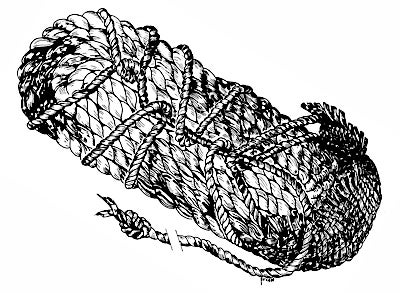 | In Spiral Weft sandals, warps run perpendicular to the length of the foot. The sole is twined over these fibers in an elongated oval pattern, spiraling out from the center of the sole much like a basket built from a center start. |
Return to Collections Galleries
Return to the Great Basin Sandals Collection Gallery
